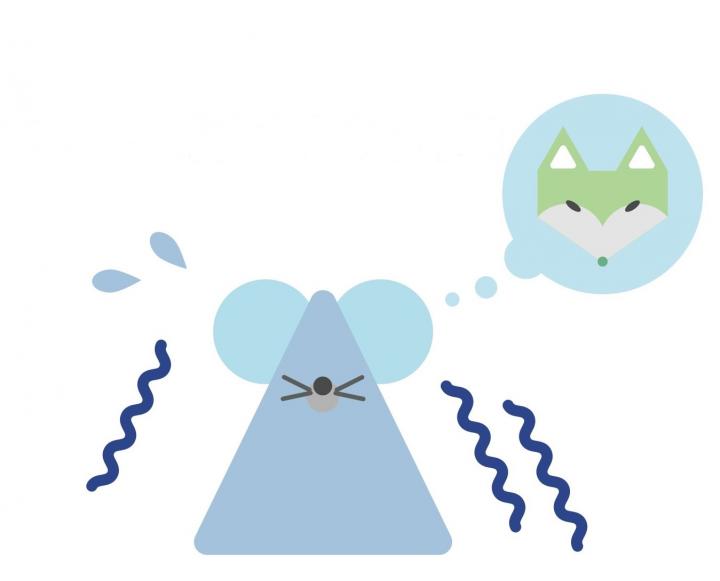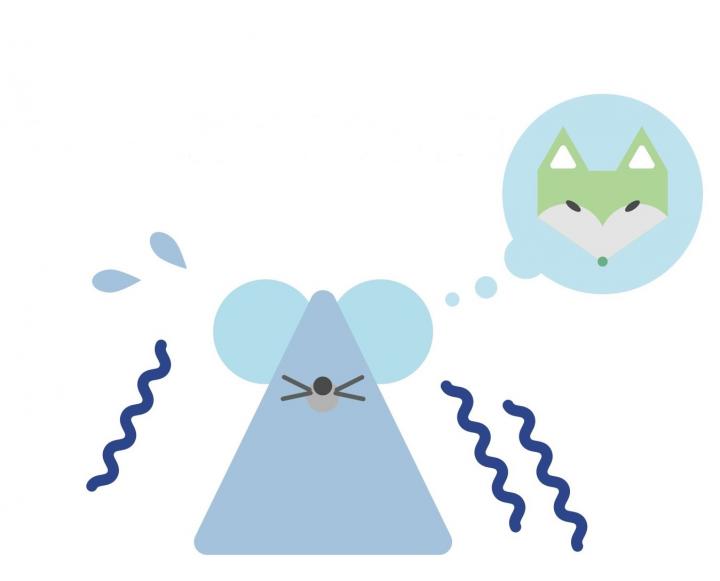
Credit: University of Tsukuba
Tsukuba, Japan -Innate fear is an essential emotion for animals to avoid danger in a severe natural environment. Rodents kept in a laboratory also show instinctive fear behavior against the smell of predators such as foxes, cats or snakes despite having never seen them. This innate fear represents an evolutionarily conserved and genetically encoded survival mechanism. However, the molecular basis of innate behaviors is largely unknown.
Scientists centered at the International Institute for Integrative Sleep Medicine (WPI-IIIS) at the University of Tsukuba in Japan used chemical mutagenesis to introduce random mutations into mice. The animals are screened for abnormal fear responses against a potent derivative of fox odorant. The screen identified a mutant pedigree, named Fearless, showing markedly attenuated freezing response (typical fear behavior in mice) against the odorant. The Fearless pedigree carried a mutation in the Trpa1 gene, which function as a pungency/irritancy receptor.
Loss of Trpa1 in mice diminished predator odor-evoked innate fear behaviors, although they exhibit a normal sense of smell. The research team then found that Trpa1 acts as a chemosensor to detect predator odors. Trpa1 is highly expressed in the trigeminal somatosensory system, which plays a crucial role in nociception, sensing harmful and potentially painful chemicals. They showed that Trpa1-expressed trigeminal neurons contribute critically to fear odor-evoked innate freezing behavior.
"Surprisingly, the trigeminal system, but the not the traditional olfactory system, triggers instinctive fear responses," says the senior author Qinguha Liu. "Predator odor-mediated activation of the Trpa1 nociceptive pathway should instinctively warn the mice of imminent dangers and trigger emergency responses to promote survival. Our studies provide a compelling molecular logic to explain how predator odor-evoked innate fear/defensive behaviors are genetically hardwired."
Furthermore, understating basic mechanism of emotion is important for therapeutics of human anxiety disorders. According to the National Institute of Mental Health (NIMH), approximately 40 million of Americans are affected by a spectrum of fear/anxiety disorders.
"We hope that identification of core fear genes, together with the use of 'fearful' mice as animal models, should facilitate our understanding of genetic origins and development of novel and effective therapeutics for human anxiety disorders," says a co-author Masashi Yanagisawa.
###
Media Contact
Masataka Watanabe
[email protected]
81-298-532-039
Related Journal Article
http://dx.doi.org/10.1038/s41467-018-04324-3





